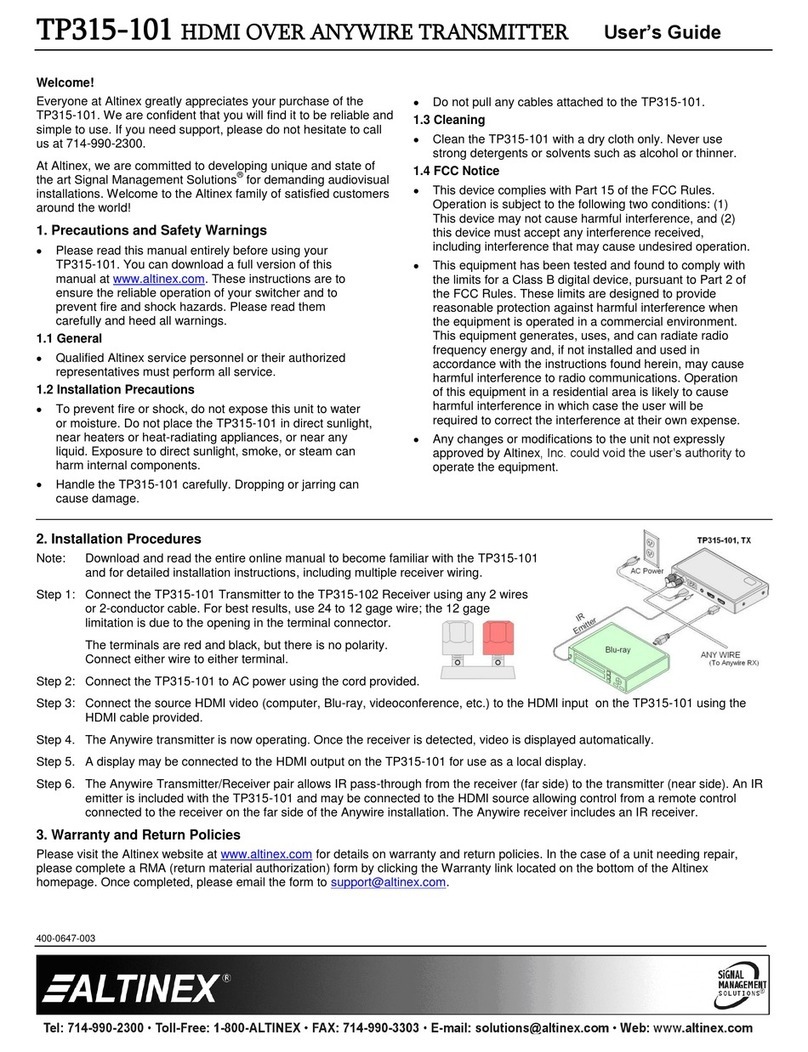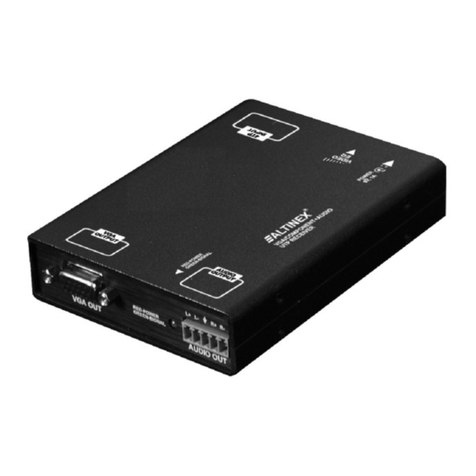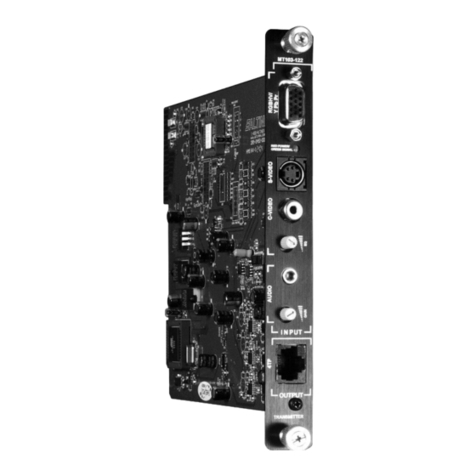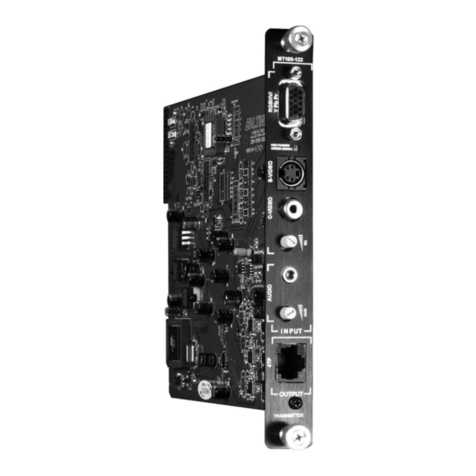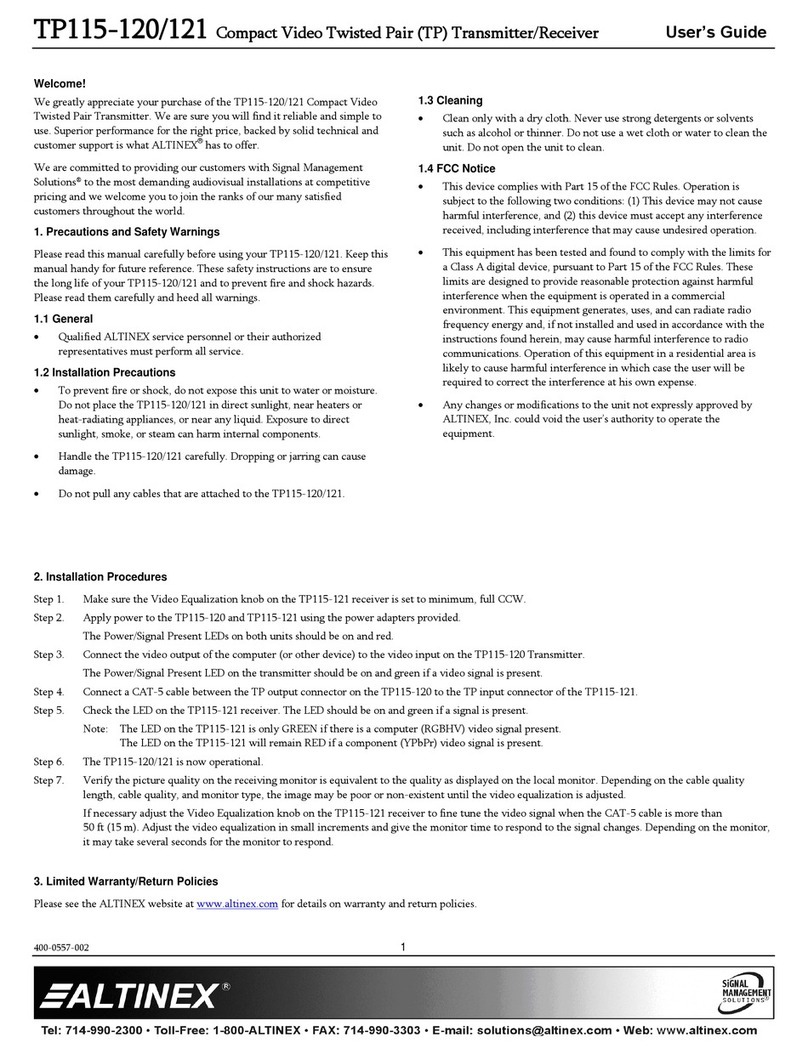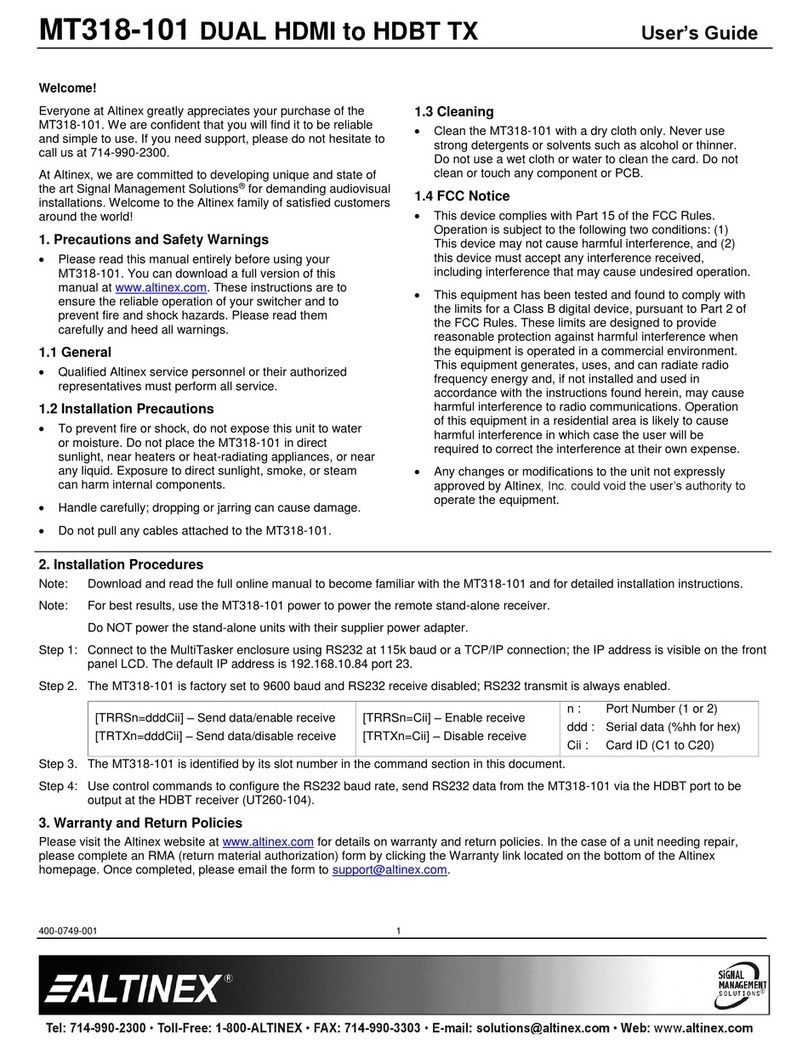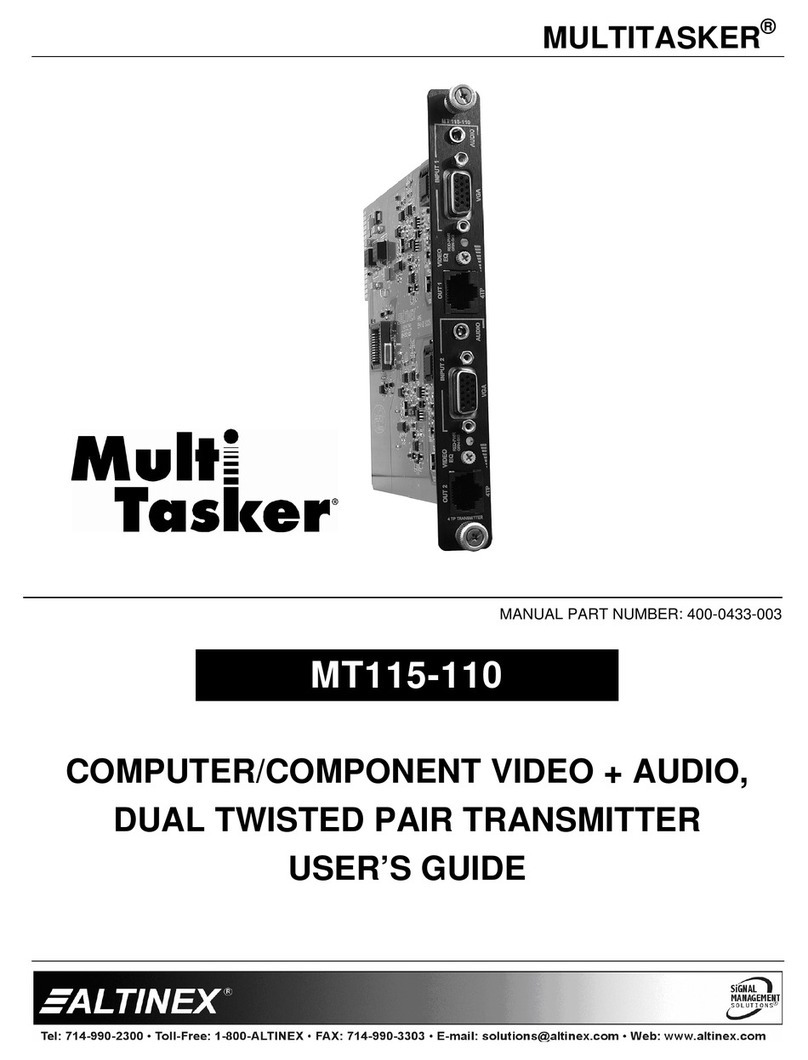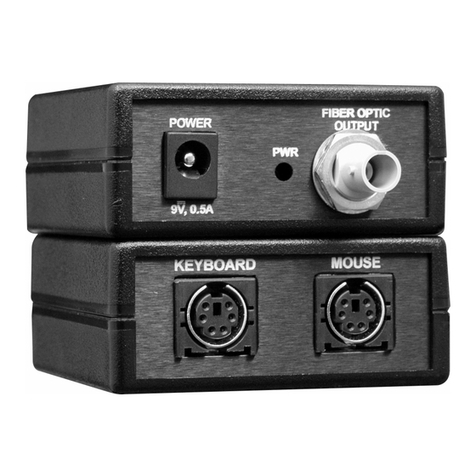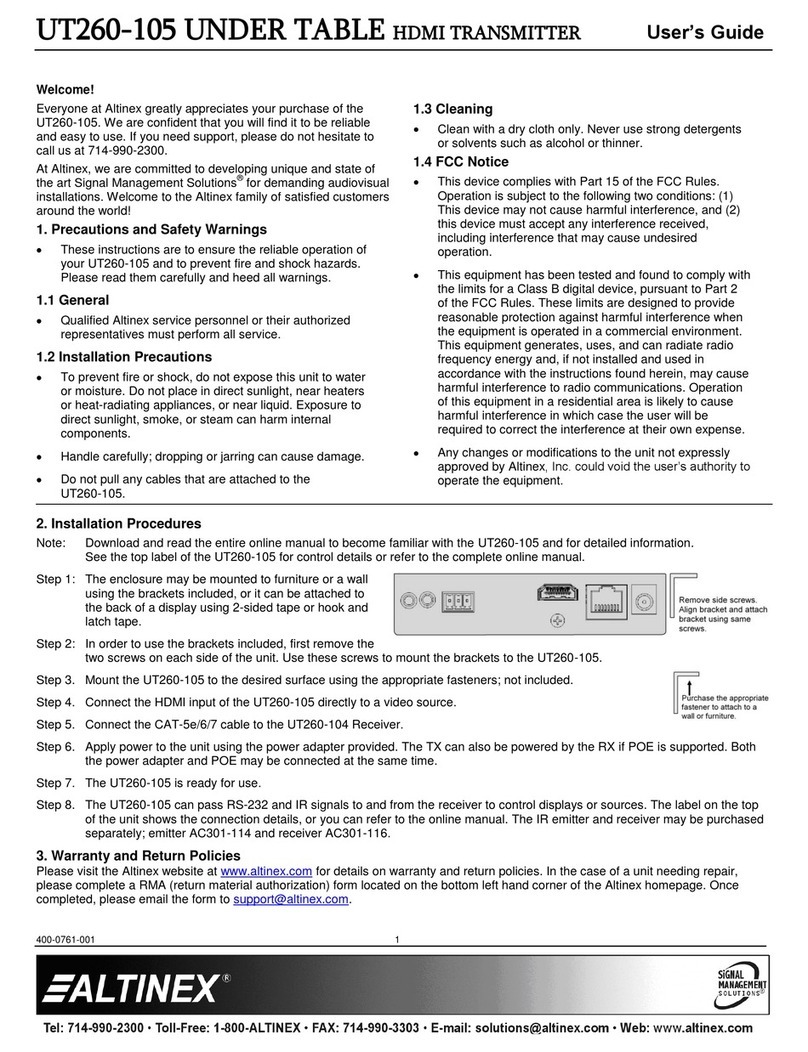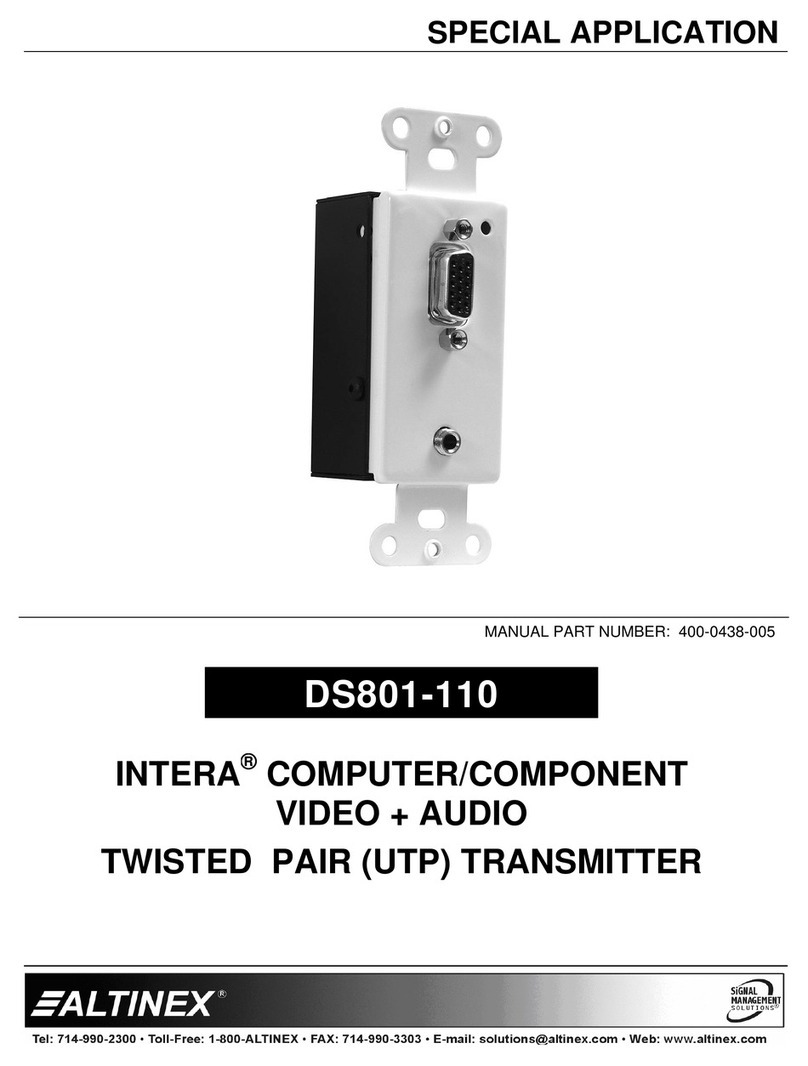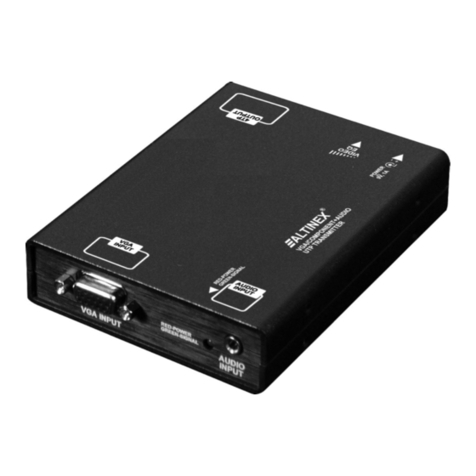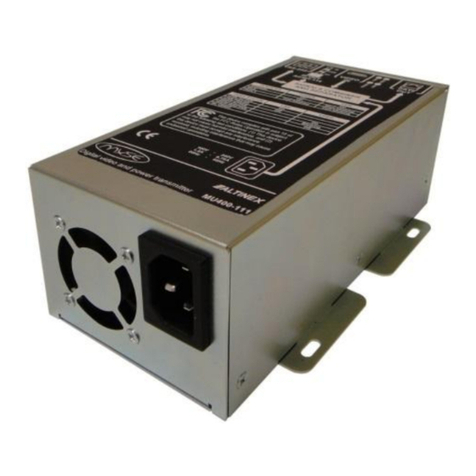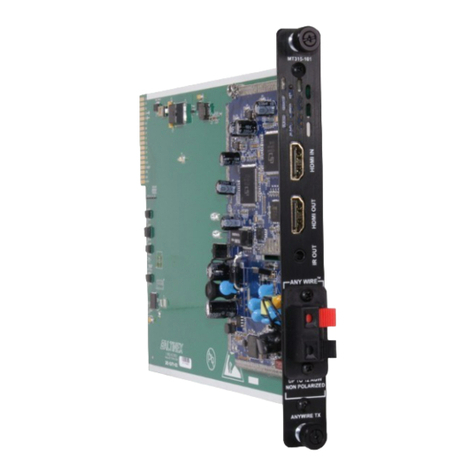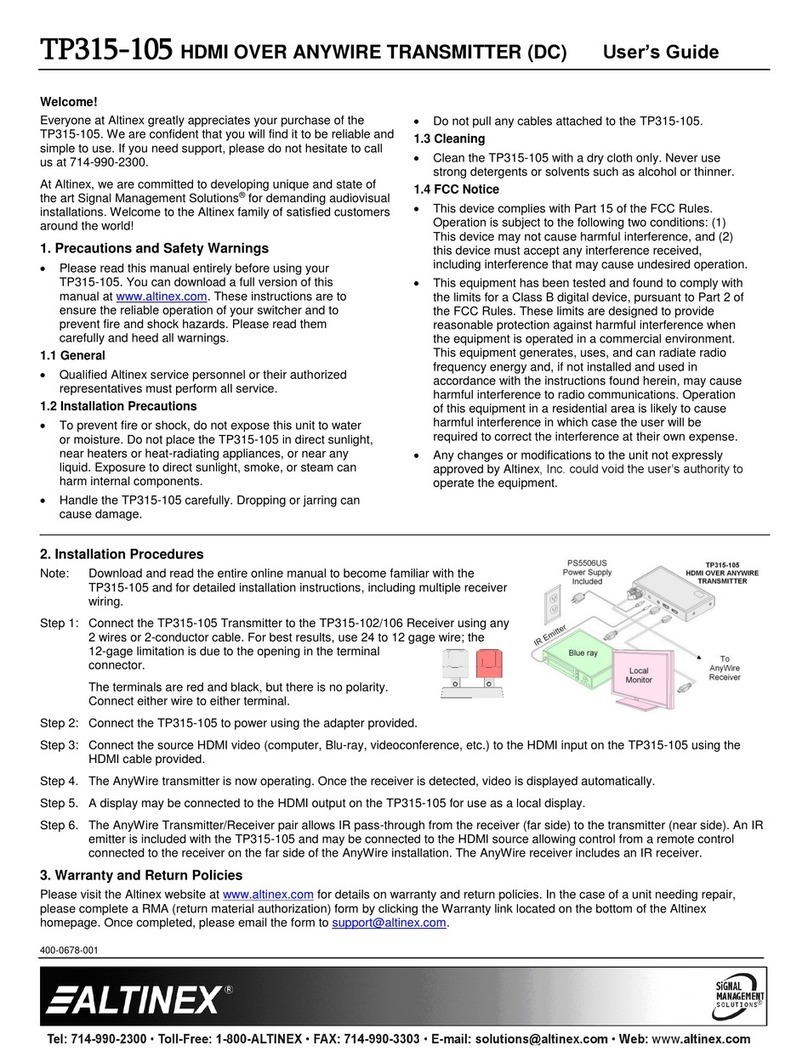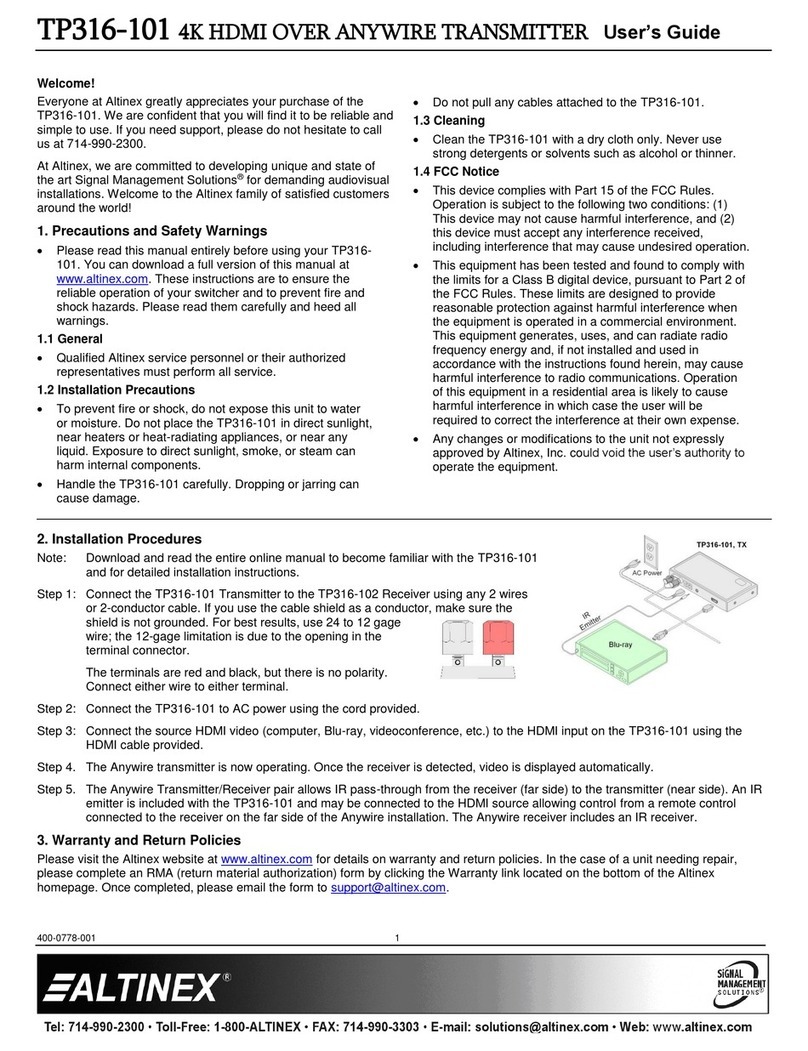Welcome!
Everyone at Altinex greatly appreciates your purchase of the
MT319-401. We are confident that you will find it to be reliable
and simple to use. If you need support, please do not hesitate to
call us at 714-990-2300.
At Altinex, we are committed to developing unique and state of
the art Signal Management Solutions®for demanding audiovisual
installations. Welcome to the Altinex family of satisfied customers
around the world!
1. Precautions and Safety Warnings
•Please read this manual entirely before using your
MT319-401. You can download a full version of this manual
at www.altinex.com. These instructions are to ensure the
reliable operation of your switcher and to prevent fire and
shock hazards. Please read them carefully and heed all
warnings.
1.1 General
•Qualified Altinex service personnel or their authorized
representatives must perform all service.
1.2 Installation Precautions
•To prevent fire or shock, do not expose this unit to water or
moisture. Do not place the MT319-401 in direct sunlight,
near heaters or heat-radiating appliances, or near any
liquid. Exposure to direct sunlight, smoke, or steam can
harm internal components.
•Handle carefully; dropping or jarring can cause damage.
•Do not pull any cables attached to the MT319-401.
1.3 Cleaning
•Clean the MT319-401 with a dry cloth only. Never use
strong detergents or solvents such as alcohol or thinner. Do
not use a wet cloth or water to clean the card. Do not clean
or touch any component or PCB.
1.4 FCC Notice
•This device complies with Part 15 of the FCC Rules.
Operation is subject to the following two conditions: (1) This
device may not cause harmful interference, and (2) this
device must accept any interference received, including
interference that may cause undesired operation.
•This equipment has been tested and found to comply with
the limits for a Class B digital device, pursuant to Part 2 of
the FCC Rules. These limits are designed to provide
reasonable protection against harmful interference when
the equipment is operated in a commercial environment.
This equipment generates, uses, and can radiate radio
frequency energy and, if not installed and used in
accordance with the instructions found herein, may cause
harmful interference to radio communications. Operation of
this equipment in a residential area is likely to cause
harmful interference in which case the user will be required
to correct the interference at their own expense.
•Any changes or modifications to the unit not expressly
approved by Altinex, Inc. could void the user’s authority to
operate the equipment.
2. Installation Procedures
Note: Download and read the full online manual to become familiar with the MT319-401 and for detailed installation instructions.
Step 1: Connect to the MultiTasker enclosure using RS232 at 115k baud or a TCP/IP connection; the IP address is visible on the front
panel LCD. The default IP address is 192.168.10.84 port 23.
Step 2. The MT319-401 is factory set to use a fixed IP, pre-defined virtual ID, and RS232 port baud rate is set to 9600.
Typically, all TX and RX units are pre-configured at Altinex prior to shipment with each unit having a preset Input or Output
number ready for use on the AV network. However, units may be customized in the field.
Use the configuration commands later in this manual to customize the unit if necessary.
Step 3. The MT319-401 is identified by its slot number in the command section in this document.
Step 4: Use control commands to manually switch inputs, toggle auto-switch on and off, and to enable/disable the output signal.
3. Warranty and Return Policies
Please visit the Altinex website at www.altinex.com for details on warranty and return policies. In the case of a unit needing repair,
please complete an RMA (return material authorization) form by clicking the Warranty link located on the bottom of the Altinex

